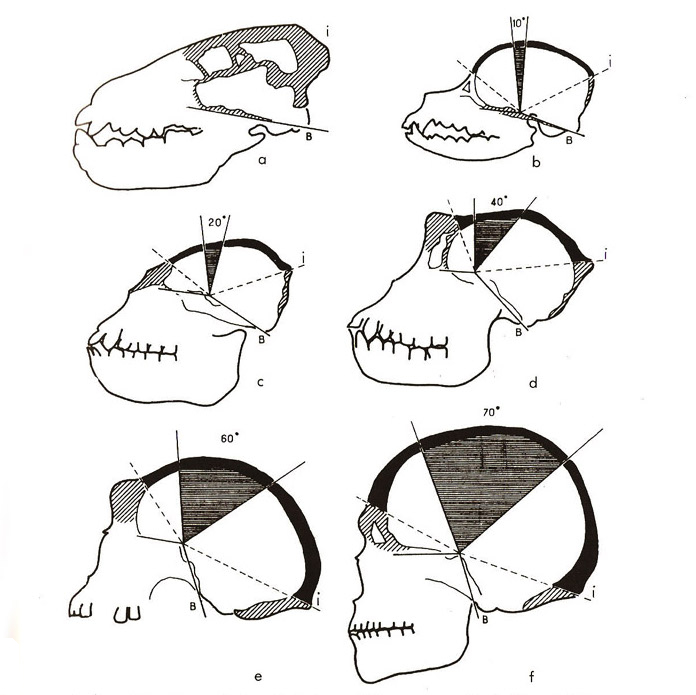Gesture and Speech

This book makes human evolution look more exciting and provocative than I would have thought possible. In particular, it explains why, when we know that many, probably most plants and animals have evolved to accommodate changing conditions in the last few centuries, human beings haven’t. To take one prominent example, while the tiny Covid virus has been evolving at a terrific rate over the past two years, our basic design — mammal, upright posture, big brain — has hardly changed in 250,000 years.
In brief, Gesture and Speech contends that this is because of our technical tendency (his term), a tendency to cope with changing circumstances and needs by externalizing aspects of both our physical and cognitive capacities. We arrange technical solutions, that involve our bodies without changing their general form. Leroi-Gourhan was a man of many parts — archaeologist, anthropologist, historian, philosopher and, almost incidentally, astute critic of art, music, food and more — and he draws on all of these to deliver his account. At the beginning he tracks a hominid evolutionary history up to the point when we began to walk upright. With this change, our hands were available for all kinds of highly informative interactions with the environment, and our crania were suspended on a vertebral column, making a very significant space available into which our brains could expand [see image above, showing changing shape of hominid cranium]. So, it is NOT the big brain that came first, driving the other developments. It was the feet that came first, making it possible for the organism to develop its control centre.
The next bit is, I think, pure genius. Our brains developed in response to a need to co-ordinate our hands — newly liberated from their drudgery in the service of locomotion — with the organs of the face, eyes, ears, lips, tongue. The key feature of our adaptation to this need to coordinate face and hands, both within the individual and within a social group — was language. It almost seems obvious in retrospect. With speech, we had become completely human, as human as we are today. Rather than actually evolving special claws or beaks or exceptional strength or sight or hearing in order to survive, we address our needs, fears, dreams and desires technically. The human body remained largely as it was at the point we stood up, even as our immediate environment changed beyond recognition.
Leroi-Gourhan argues closely and carefully. This book is quite difficult to read, not only because the information is so vast, minute, and diverse, but also because the ideas are so unfamiliar — particularly to Anglophone readers (Although it was published in French in 1964, this book was not translated into English until 1993, and Leroi-Gourhan has never drawn the same level of attention among Anglophone readers as, say Claude Lévy-Strauss, a figure whose thought was comparable in terms of scope, depth, and implications.). The book demands such close attention, raises so many new questions, initiates such remarkable new patterns of thought, a reader wonders whether she herself is evolving.
André Leroi-Gourhan, Gesture and Speech, Cambridge: MIT Press, 1993. Drawings from pp. 68-9.


